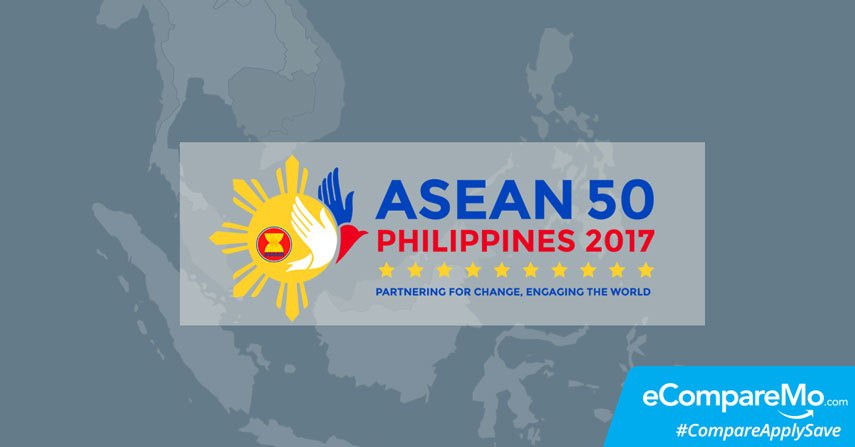The ASEAN Summit: What It’s About, The VIPs In Attendance, And Why It’s Such A Big Deal
4 min readHosting international events like the Association of Southeast Asian Nations (ASEAN) Summit can be pretty expensive, but the benefits outweigh the price that comes with it.
Tomorrow, various heads of governments from Southeast Asian countries will arrive in the Philippines to discuss various issues faced by the members of the ASEAN.
For the 50th anniversary of the organization, all eyes are now in Manila, with the heads of states led by President Rodrigo Duterte this year.

In 2015, the country also became the host of the Asia Pacific Economic Cooperation (APEC), a year-long event that culminated with a leaders’ summit. That’s a total of 47 meetings spread throughout the year and a seven-day big event
The Philippines invested around P9.8 billion to make sure things would go seamlessly and create a prosperous mood for the delegates.
So how much did the Philippines shell out this year? And what will we get in return of the amount we spent to give Southeast Asian leaders a fitting treatment?
The summit
To begin with, the Philippine government allotted around P15 billion, which was approved under the 2017 national budget.
Like the part of the budget from the national coffers, the money used for the year-long hosting responsibilities of the ASEAN Summit is more of an investment.
Initially, the budget requested by Office of the President was P20.03 billion, which was subsequently trimmed to the current amount to be spent by the government.
Despite cutting the cost of the summit, Budget Secretary Benjamin Diokno said that it would be a big event because of the ASEAN’s golden anniversary.
“They said this is going to be a big event, the Golden Anniversary of ASEAN. Most of it will be spent domestically—hotels, restos, local travel. Big chunk will be used for rental of cars for dignitaries,†Diokno said last year.
Aside from accommodation and event expenses, security also needs some serious money to make sure the heads of state are safe.
ASEAN 2017 National Organizing Council Director-General for Operations Ambassador Marciano Paynor Jr said that one-third of the P15-billion budget was used for security.
“Biggest expense? Security. That’s a particular area where you know you are waiting for the 0.1% that might happen but you pray will not, but you have to be prepared for it anyway, so you spare no expense,†said Paynor.
Meanwhile, a report by Rappler says that around P647 million went to the promotion of the ASEAN Summit both here and abroad, which included expenses such as campaigns, equipment, public relations services, media distribution, and other marketing endeavors to let the public know the significance of such event.
By the numbers
From April 26 to 29, the leaders of different Southeast Asian nations will meet on common issues of interests such as economy, security, jobs, and education, among others. They are the following:
- Sultan Hassanal Bolkiah of Brunei
- Prime Minister Hun Sen of Cambodia
- President Joko Widodo of Indonesia
- President Bounnhang Vorachith of Laos
- Prime Minister Najib Razak of Malaysia
- Foreign Minister Aung San Suu Kyi of Myanmar
- President Rodrigo Duterte of the Philippines
- Prime Minister Lee Hsien Loong of Singapore
- Prime Minister Prayut Chan-o-cha of Thailand
- Prime Minister Nguyen Xuan Phuc of Vietnam
It should be noted that Myanmar Foreign Minister Aung San Suu Kyi also serves as the State Chancellor and is representing her country on behalf of President U Htin Kyaw. A State Chancellor acts as the prime minister of Myanmar and is considered the de facto head of state.

Worth ever peso spent
Being the host country for the ASEAN Summit only happens every once in a while.
While it may seem like a ludicrous expense to host such a billion-peso conference, this is a win-win situation for all parties involved. However, becoming the arena of such event serves as a perfect opportunity for the country to prioritize its interests.
“I suppose President Duterte will highlight his favorite topics such as drugs, terrorism, and ASEAN unity. And I hope we will be able to move on [to the issue of] West Philippine Sea because during the last meeting, we were silent on that one,†said former Foreign Affairs undersecretary Lauro Baja Jr.
Since the ASEAN is celebrating its 50th anniversary—and with the chairmanship for this year’s summit given to one of the founding members of the group—this is the best time for the Philippines to take advantage of the spotlight and further its priorities.
In addition, meeting with leaders, senior officers, business, and civil leaders will foster tighter economic and political ties among member countries, which will later on lead to gains among all members.
While the price that came with the leadership of this year’s ASEAN Summit is exorbitant, keep in mind that the P15 billion budget here will be dwarfed by the numerous benefits to be reaped by the Philippines and neighboring Southeast Asian countries in the future.
